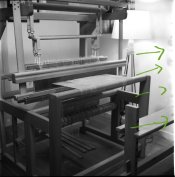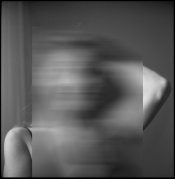- Joined
- Nov 11, 2006
- Messages
- 4
- Format
- 35mm
I have been developing my own film for a few years now, but my last few rolls of 120 have had some strange artifacts.  The negatives have dark circles and blobs that run along the side of the negative without manufacturers markings (Fuji ACROS 100). I have included a sample one of the images with the problem.
The negatives have dark circles and blobs that run along the side of the negative without manufacturers markings (Fuji ACROS 100). I have included a sample one of the images with the problem.
A few details on my setup:
Camera: Yashica Mat 124G
Tank: Paterson System 4
Developer: Relatively Fresh XTOL Stock
Any suggestions would be appreciated, than you.
 The negatives have dark circles and blobs that run along the side of the negative without manufacturers markings (Fuji ACROS 100). I have included a sample one of the images with the problem.
The negatives have dark circles and blobs that run along the side of the negative without manufacturers markings (Fuji ACROS 100). I have included a sample one of the images with the problem.A few details on my setup:
Camera: Yashica Mat 124G
Tank: Paterson System 4
Developer: Relatively Fresh XTOL Stock
Any suggestions would be appreciated, than you.






